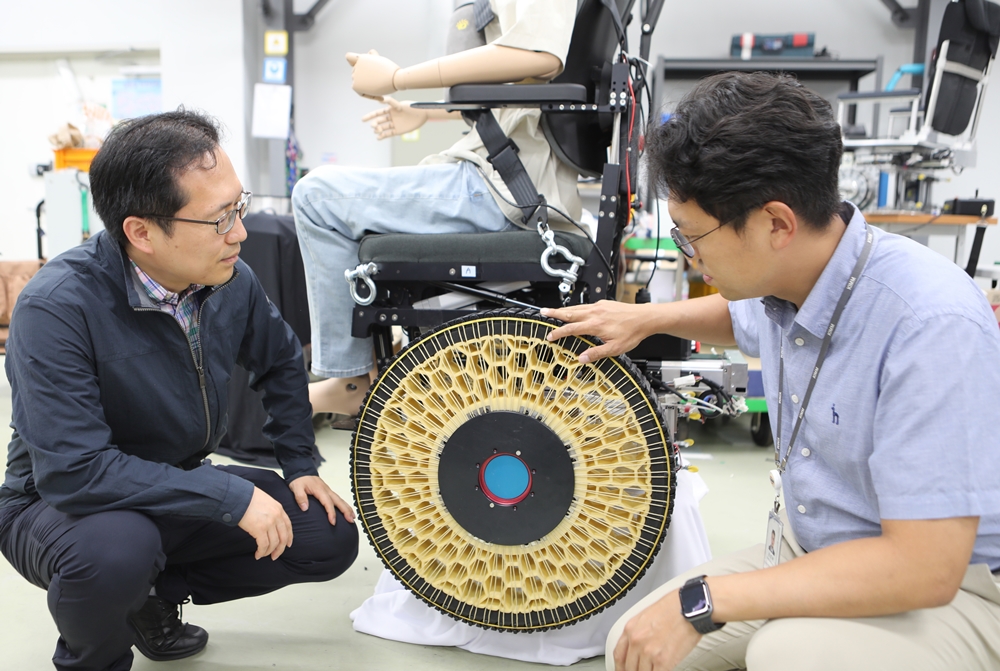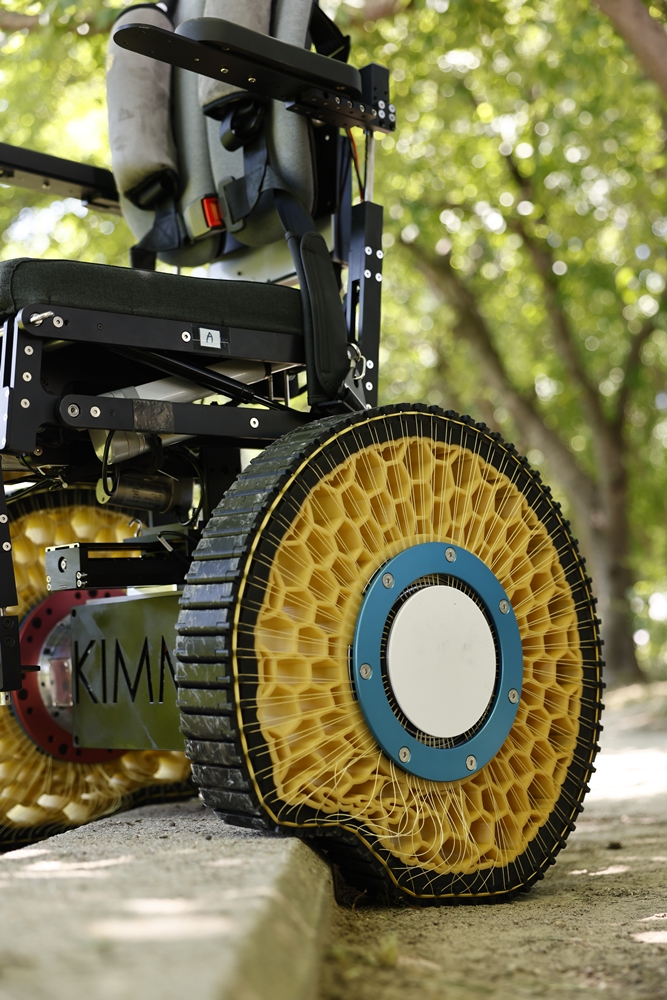
Song Sung-Hyuk (right), a senior researcher at the Advanced Robotics Center of the Korea Institute of Machinery and Materials, and center director Kim Dong Il inspect a wheelchair with the morphing wheels they invented.
By Charles Audouin
Photos = Korea Institute of Machinery and Materials
A domestic think tank has developed wheels and mobile robot technology that can overcome obstacles on paths in daily life such as stairs or rocks.
The Korea Institute of Machinery and Materials (KIMM) on Sept. 2 said it simulated the principles of surface tension of liquid droplets to develop the world’s first morphing wheel that freely changes stiffness, applying this technology to moving vehicles.
Developed by Kim Dong Il, director of the Advanced Robotics Center at KIMM’s AI Robotics Lab, and center senior researcher Song Sung-Hyuk, the revolutionary morphing wheel and modular system allows easy shifts of stiffness without complicated mechanical devices or sensors.
Conventional wheels are limited even when moving on flat surfaces as they experience large deformation, thus lowering driving efficiency and safety and raising noise. With the morphing wheels, however, a user can alter stiffness as desired so that they maintain the same stiffness as those of a regular wheel when moving fast on flat surfaces and makes the wheels softer only when going over obstacles.
In October last year, the team finished verification of its wheels’ mechanism and more recently developed modularization technology easily applicable to moving vehicles such as two-wheeled wheelchairs to overcome rocks or 18 cm-high stairs.
“Our newly developed morphing wheel is significant in maintaining high mobility efficiency of conventional wheels while overcoming the latter’s limit of overcoming obstacles,” the team said. “We expect extensive use of the wheels in wheelchairs able to roll over obstacles and moving robots as well as boarding a mode of transportation.”
The study made the August cover of the American research journal Science Robotics.
Morphing wheels on wheelchairs change form depending on obstacles on a path.
caudouin@korea.kr























